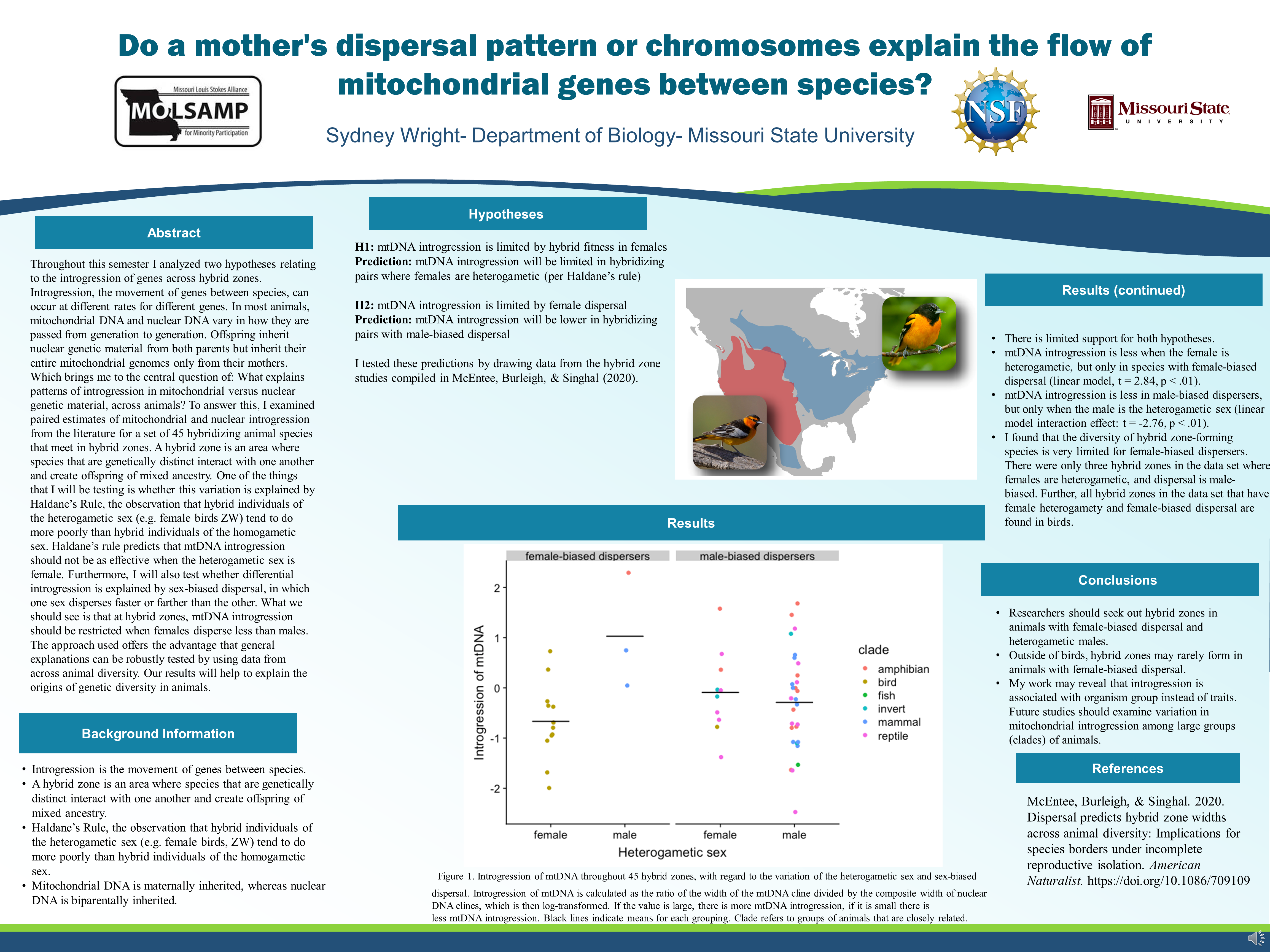Sydney Wright
Does a Mother's Dispersal Pattern or Chromosomes Explain the Flow of Mitochondrial Genes Between Species?
Throughout this semester I will be working with Dr. McEntee in his lab. The central question that we will be focused on answering will be, does Haldane’s Rule predict mitochondrial DNA introgression across animal hybrid zones? However, to understand the research that I will be doing you need to first understand some of the main concepts that I will be looking at. Closely related animal species hybridize in nature. Such hybridization can lead to genetic information flowing between species, which is a process called introgression. Introgression can vary a great deal in regards to mitochondrial DNA, which is inherited maternally in most species. Which is why I will be looking at how mitochondrial DNA introgression varies among different hybrid zones. In order to analyze this, I will be looking at Haldane's rule and how it explains this variation. “Haldane's rule states that, if species hybrids of one sex only are inviable or sterile, the afflicted sex is much more likely to be heterogametic (XY) than homogametic (XX).” There are a lot of species that differ in which sex is heterogametic. For example, in fruit flies males are heterogametic while in birds females are. For introgression in maternally inherited mitochondrial DNA female hybrids must survive and reproduce. Which in the case of Haldane's rule it predicts that mitochondrial DNA introgression should be more easily occurring in animals with heterogametic males than females. Throughout this semester I will use the scientific literature to score different hybridizing species for heterogametic of sex chromosomes and for any evidence of mtDNA inheritance that is not purely maternal. Using the data set compiled by McEntee et al. (unpublished) together with information about sex chromosome heterogamety, I will run robust statistical approaches to test the predictions of Haldane’s Rule with respect to mtDNA introgression in hybridizing animals.
